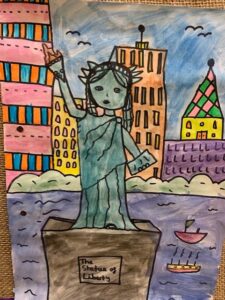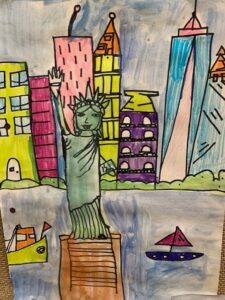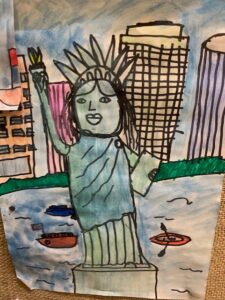Year 1 – Europe ….. Ferdinand the Bull & Icelandic Turf House
The children watched a film clip of Ferdinand the Bull and the created their own bulls and even named them. Each bull has their own unique expression as it enjoys sitting in the sunshine surrounded by nature.
They are all so fabulous!
Which one is your favourite?….It’s hard to choose isn’t it?















TURF HOUSE OF ICELAND
Turf houses are a traditional style of home found in ICELAND. The turf house came about for two reasons: a harsh climate and the lack of available wood for building. Iceland was lacking in large trees suitable for building when settlers arrived, so they had to get creative with building materials and conserve the timber that they did have. Instead of building the entire home out of wood like their Scandinavian neighbours, they instead made a foundation out of stone, built a wooden frame and then used the abundantly available turf to insulate the homes and even put it on top of the roof! The byproduct of turf homes were naturally insulated homes that offered protection from very cold winters, while also remaining cooler in warmer months.
The children learnt all about these amazing homes before creating their own, using mixed media including Sharpies, crayons and painted paper for the turf roof. If you look closely you may get a sneak peak inside these Turf houses.








Reception – Europe German Garden Gnomes & Swedish Dala Horses
GARDEN GNOMES
GARDEN GNOMES are small figurines often used to decorate gardens. Some of the first gnome statues to be mass-produced came from GERMANY in the 1870s. In Germany, gnomes were originally tied to traditional stories and superstitions and were believed to help around the farm and the mines. They later became household decorations. Gnome statues range in size and style and have been made from materials like wood, stone and clay. They usually feature a traditional pointy red hat. The children listened so well and followed the instructions to create these delightful gnomes. Each one has it’s own personality that you can see from their expression. It would be impossible to choose a favourite. Well done Reception children.










DALA HORSES
Dalecarilian horses, or DALA HORSES for short, are traditional carved Swedish wooden statues. They are named after the province they originated in, Dalecarlia, SWEDEN. Dala horses were originally carved as children’s toys, but have now come to be recognised as a symbol for Sweden. The most common form of the Dala Horse is a red body with white, green, yellow and blue saddle and harness.
The children created a ‘repeating pattern’ background and then decorated their own Dala horses and glued them onto the background. They look totally fab!







Global Art Passport….we have arrived in EUROPE
The next stop on our art tour is EUROPE!
Every year group will be participating and you will be able to see incredible art from Russia, Sweden, Iceland, Holland, Germany and so much more….. we will even stop off in Great Britain!
Reception Art – Daffodils for St David’s Day
Reception children enjoyed learning about daffodils. They know that they are a symbol of Wales and they listened to the first verse of William Wordsworth’s famous poem about Daffodils.
DAFFODILS
I wandered lonely as a cloud
That floats on high o’er vales and hills,
When all at once I saw a crowd,
A host, of golden daffodils;
Beside the lake, beneath the trees,
Fluttering and dancing in the breeze.
The children then did their own observational drawing of a daffodil, using oil and chalk pastels. Every daffodil was so good that they were ALL displayed in the hall.
Very well done!
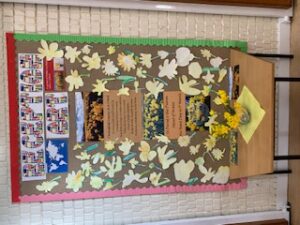
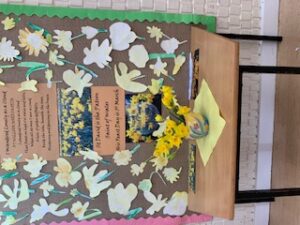
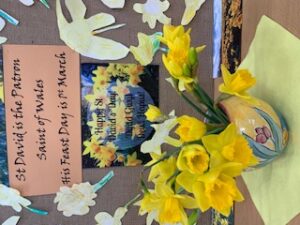
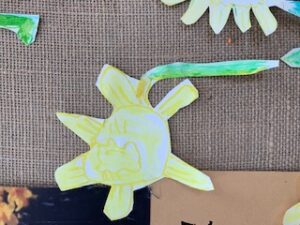
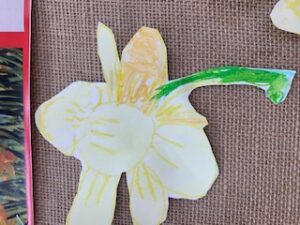
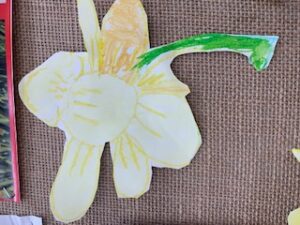
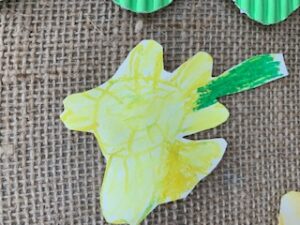
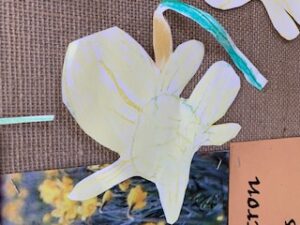
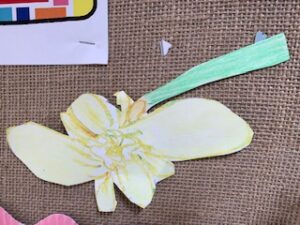
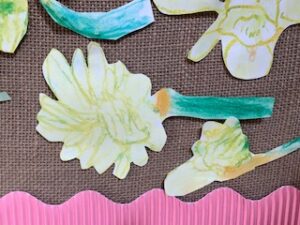
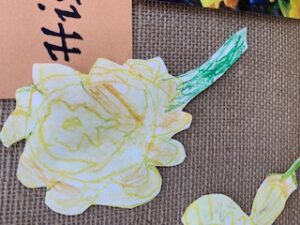
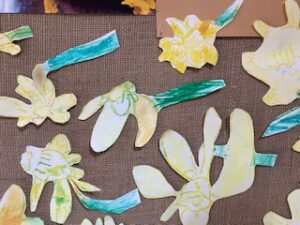
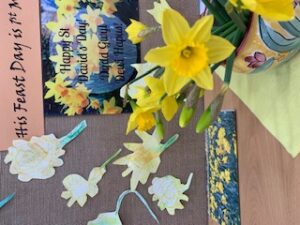
LOVE IS IN THE AIR! Recpetion Art
RECEPTION CHILDREN WERE THINKING ABOUT THE PEOPLE THEY LOVE AND THE REASONS THEY LOVE THEM AS THEY CREATED THESE STUNNING VALENTINE CARDS. THEY USED MIXED MEDIA OF COLOURED PENCILS AND FELT TIPS…WILL YOU BE LUCKY AND GET A CARD ON THE 14TH FEBRUARY?
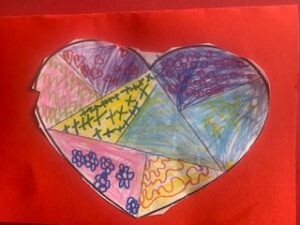
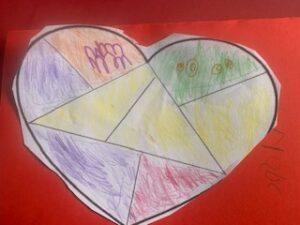
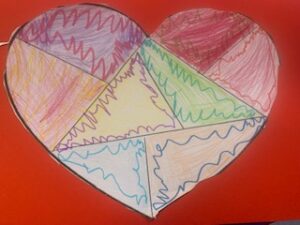
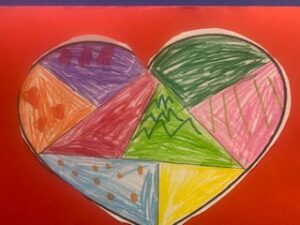
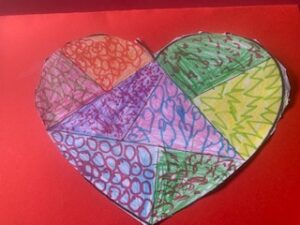
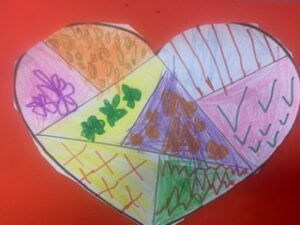
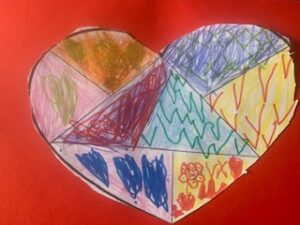
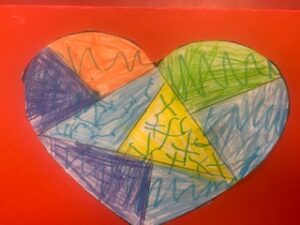
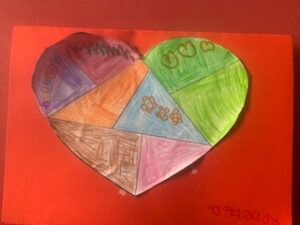
Chinese New Year 2022 – The Year of the Tiger….Reception Art
Our Reception children have been learning about Chinese New Year. They then created these TIGERS to celebrate the Year of the TIGER. As you can see, each tiger has their own unique expression and I think the children did an amazing job. Which one is your favourite?
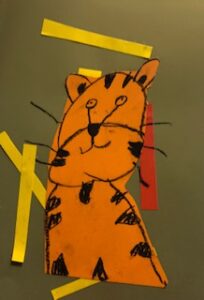
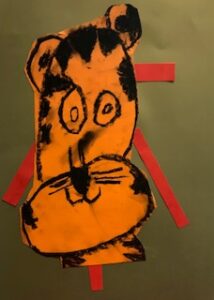
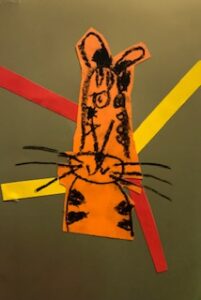
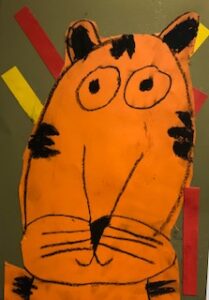
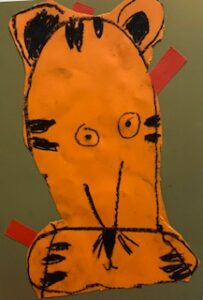
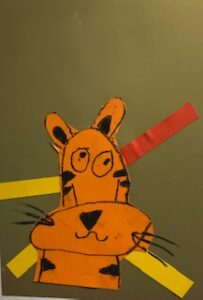
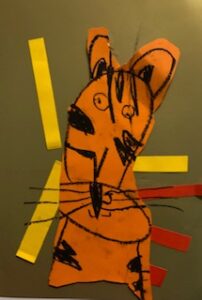
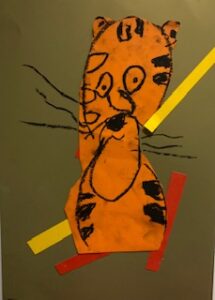
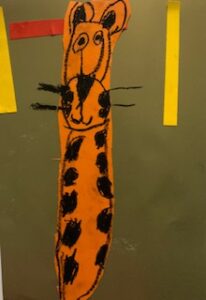
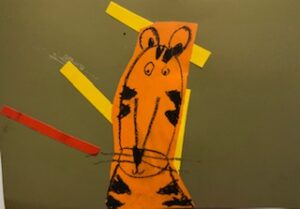
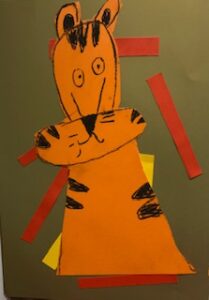
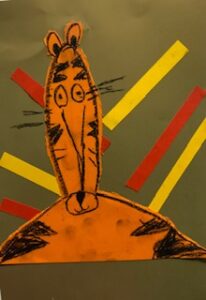
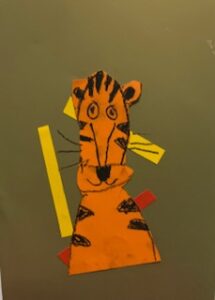
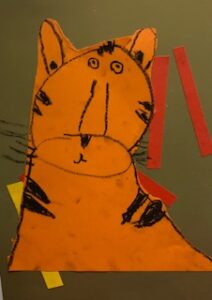
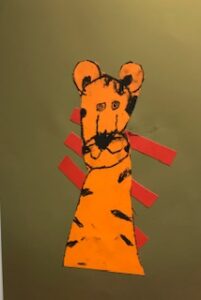
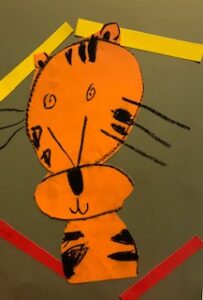
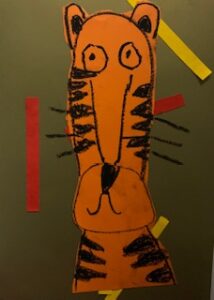
Beijing Olympics 2022
YEAR 4 CREATED THEIR WINTER OLYMPIANS. As you can see they rose to the challenge and created these amazing Olympic athletes doing a range of disciplines. Very well done Year 4 – I’m so proud of you!
DO YOU HAVE A FAVOURITE? Why is it your favourite?
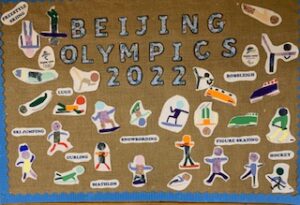
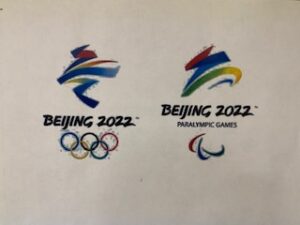
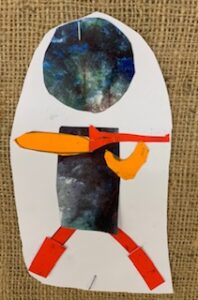
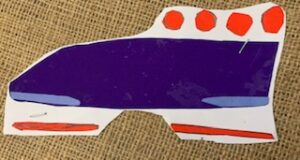
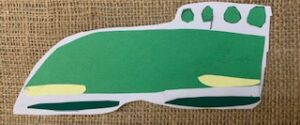
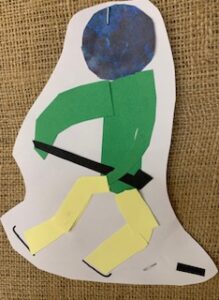
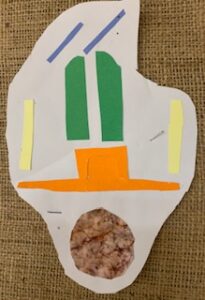
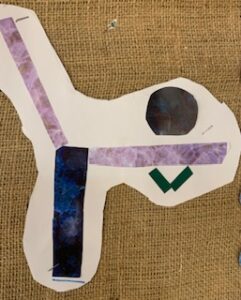
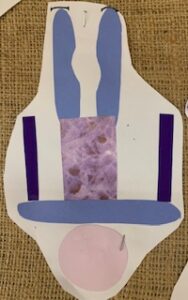
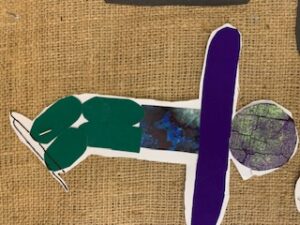
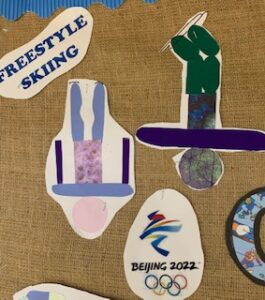
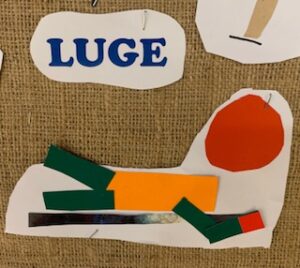
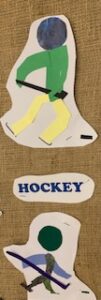
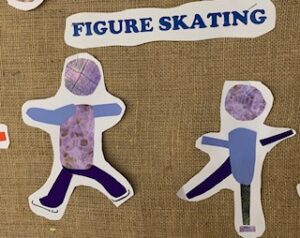
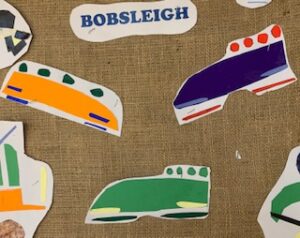
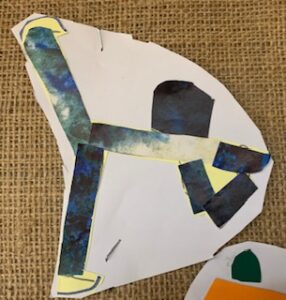
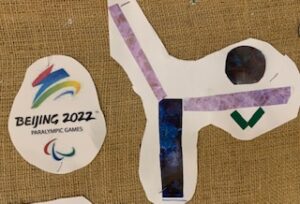
Heroes Stamp Design Competition
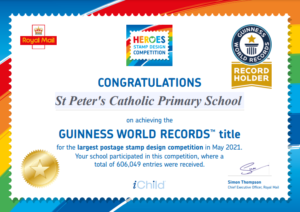
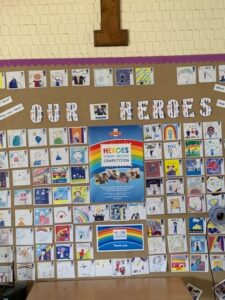
120 FINALISTS ANNOUNCED
GUINNESS WORLD RECORDS® TITLE FOR LARGEST POSTAGE STAMP DESIGN COMPETITION
Thank you so much to all the children for taking part in the Heroes Stamp Design Competition.
An incredible 606,049 entries were received from children across the UK, with an amazing 7,479 schools taking part. Although we didn’t make it to the final stages, congratulations to all the children at ST PETER’S who entered, as their designs contributed towards a GUINNESS WORLD RECORDS™ title for the largest postage stamp design competition!
Prime Minister Boris Johnson said: “It is of great credit to the children of this country that in world record breaking numbers they picked up their paintbrushes, pens and paints and paid artistic tribute to the heroes of our coronavirus response. Their brilliant efforts represent the collective gratitude of the nation to everyone who went above and beyond during the pandemic. Congratulations to all those who have made it to the next round and thank you to everyone who has taken part.”
Simon Thompson, Royal Mail CEO, said: “We would like to thank all of the 606,049 children who submitted such brilliant designs to the competition. We have been humbled by the sheer volume of entries. And to have achieved a Guinness World Records title in the process shows how much the UK’s children value those heroes who have kept the nation moving during such a difficult period. To the 120 Regional Finalists – Well Done! We are really looking forward to seeing the winning eight designs!”
Well done St Peter’s children.
Year 6 Earth protectors and the Northern Lights
There are few natural sights more magical than seeing the Northern Lights flicker and dance across the sky. In this project, the children created a landscape inspired by Canadian artist Bärbel Smith’s interpretation, which appear in the night sky as a ribbon-like form. They focused on value as they used chalk pastels to add light and dark colours to create the form of the Northern Lights over a blended background. The children were engrossed in this two lesson project and the finished pictures are as spectacular as the Northern Lights themselves!
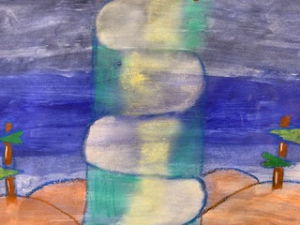
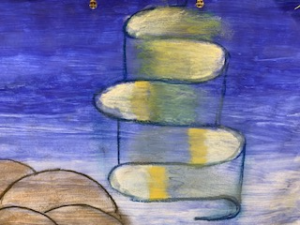
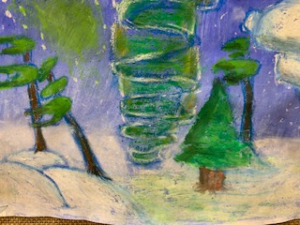
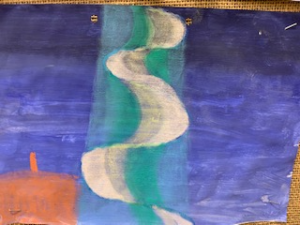
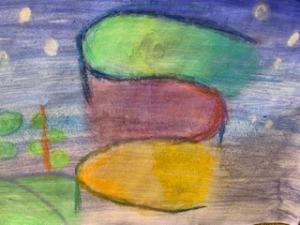
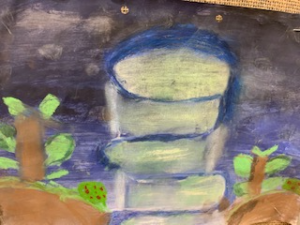
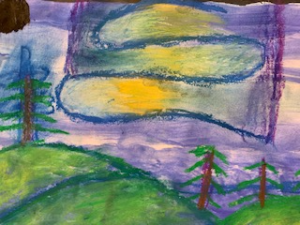
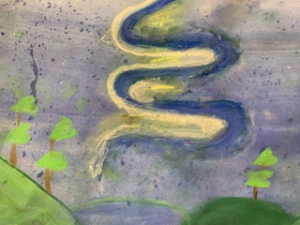
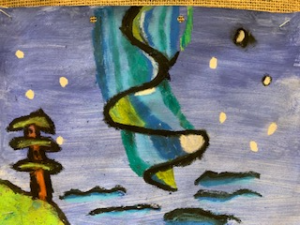
We Are Water Protectors was written by Carole Lindstrom, who is part of the INDIGENOUS Ojibwe people. The main theme of this reading is the ongoing issues surrounding the Dakota pipeline and what that means to the local indigenous communities. The story goes through the importance of protecting our environment, traditions and community. Michaela Goade’s illustrations bring each page to life with sweeping landscapes, designs and colours that swirl and melt together.
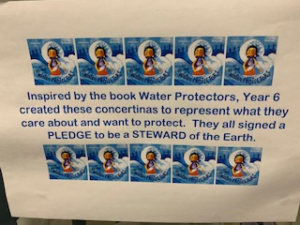
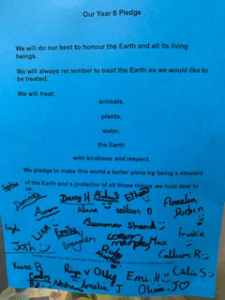
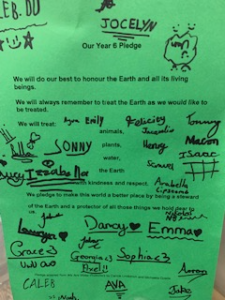
The children created a beautiful watercolour concertina and filled it with everything that they wanted to protect. The end results were both thought provoking and stunning.
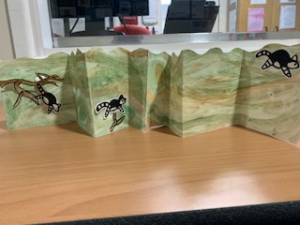
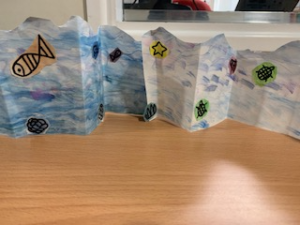
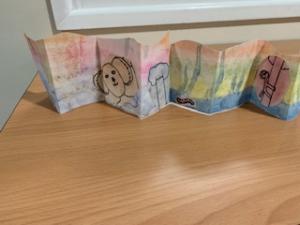
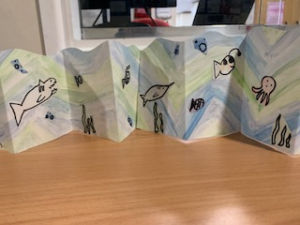
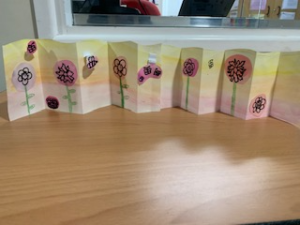
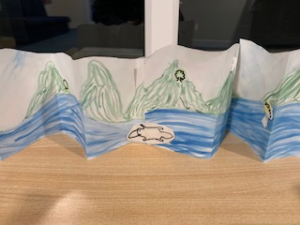
Year 5 Statue of Liberty
ABOUT THE STATUE OF LIBERTY
The STATUE OF LIBERTY stands on Liberty Island in New York City harbour. She has stood as a symbol of the UNITED STATES since it the statue’s dedication in 1886. Sculpted by Frédéric Auguste
Bartholdi, the statue was a friendship gift to the United States from the French. In her right hand she raises a torch which is a symbol of Liberty’s focus on enlightenment and progress, and in her left hand she carries a tablet inscribed with July 4, 1776 which is the day the United States declared independence.
Year 5 children created their own Statue of Liberty picture by bravely using a sharpie to draw Lady Liberty and the background (no pencils!) and then using a combination of water colour paints and felt tips.
